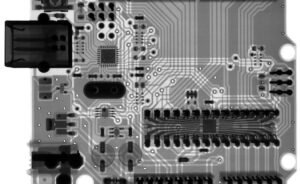Is Deepfake Technology Real?
Deepfake technology is the practice of using artificial intelligence and machine learning to create manipulated or synthetic media that appears real. This emerging technology has garnered attention and raised concerns due to its potential to spread disinformation, manipulate images and videos, and even impact personal privacy and security. But is deepfake technology real, or is it just hype? In this article, we will explore the reality behind deepfake technology and its implications.
Key Takeaways:
- Deepfake technology utilizes AI and machine learning algorithms to create realistic fake media.
- It can be used to manipulate images, videos, and even voices.
- There are real concerns about the potential negative impact of deepfake technology on society.
- It is crucial to raise awareness and develop countermeasures to combat the spread of malicious deepfakes.
**Deepfake technology** operates by utilizing powerful artificial intelligence algorithms to analyze and manipulate various forms of media. By training deep learning models on extensive datasets, these algorithms can generate highly convincing and realistic fake media that can be difficult to distinguish from genuine content.
*One interesting aspect of deepfake technology is its ability to manipulate not only images and videos but also voices.* This means that it is possible to create deepfake audio recordings that sound like someone saying things they never actually said. This presents significant challenges for trust and authenticity in an increasingly digital world.
The Impact of Deepfakes
The potential impact of deepfakes is vast and raises serious concerns. Here are some key areas where deepfake technology has the potential to disrupt and harm society:
- **Misinformation and disinformation**: Deepfakes can be used to spread false information, creating a challenge for both individuals and institutions in determining what is authentic and what is fake.
- **Political manipulation**: Deepfakes can be exploited to manipulate public opinion, influence elections, and undermine trust in democratic processes.
- **Cybersecurity and fraud**: Deepfakes can be used to deceive individuals and organizations, leading to financial fraud, blackmail, and other malicious activities.
- **Privacy concerns**: Deepfakes pose a threat to personal privacy, as individuals can be targeted with fabricated media that can have far-reaching consequences.
| Use Case | Description |
|---|---|
| Entertainment | Deepfake technology is used in the entertainment industry for various purposes, including creating digital doubles for actors and enhancing visual effects. |
| Politics | Deepfakes can be used to create politically motivated fake videos or speeches, potentially causing significant social and political unrest. |
| Education and Research | Deepfake technology can be leveraged in educational and research settings to simulate historical figures or create instructional content. |
*It is important to distinguish between harmless and malicious use cases of deepfake technology.* While it may have beneficial applications in certain industries, the potential for misuse and harm cannot be overlooked.
Combating Deepfake Technology
Recognizing the potential dangers posed by deepfake technology, researchers and industry experts have been working on developing countermeasures to detect and combat deepfakes. Some approaches include:
- **Blockchain technology**: Utilizing blockchain can help ensure the authenticity and integrity of digital media by creating a secure and transparent digital trail.
- **Deepfake detection algorithms**: Developing advanced algorithms capable of identifying deepfake content by analyzing inconsistencies and artifacts in the media.
- **Education and awareness**: Raising awareness about deepfake technology can help individuals become more adept at spotting potential fake media.
| Implication | Description |
|---|---|
| Social Engineering | Deepfakes can be used to trick individuals into providing sensitive information, leading to identity theft or unauthorized access. |
| Legal and Ethical Dilemmas | Deepfake technology raises significant legal and ethical questions, such as issues of consent, privacy, and intellectual property rights. |
| Technological Arms Race | As deepfake technology advances, countermeasures and detection techniques must keep pace, leading to an ongoing technological arms race. |
*As deepfake technology continues to evolve and become more sophisticated, it is crucial for regulators, researchers, and society as a whole to work together to address the challenges it presents.*
Deepfake technology is not a figment of imagination; it is consistently improving, raising legitimate concerns about the potential negative impact on society. However, by staying informed, developing robust detection mechanisms, and promoting media literacy, we can navigate this technology’s risks and help ensure its responsible use.

Common Misconceptions
Paragraph 1:
Deepfake technology has been a subject of fascination and concern in recent years. However, there are several common misconceptions surrounding this technology that need to be addressed.
- Deepfakes are indistinguishable from real videos.
- All deepfake videos are malicious and used to spread misinformation.
- Deepfakes can recreate any person convincingly.
Paragraph 2:
One common misconception about deepfake technology is that it produces videos that are impossible to distinguish from real videos. While deepfakes can be incredibly convincing, there are often telltale signs that can help people identify them.
- Blurring or distortion around the edges of the face may be visible in deepfake videos.
- Unnatural blinking or facial movements can be a red flag.
- Discrepancies in lighting or inconsistent shadows may indicate a deepfake video.
Paragraph 3:
Another misconception is that all deepfake videos are created with malicious intent to spread misinformation. While there have been instances of deepfake videos being used for harmful purposes, such as revenge porn or political manipulation, this technology can also be used for positive applications.
- Deepfakes can be used in the entertainment industry to bring fictional characters to life.
- They can assist in creating realistic visual effects in movies and video games.
- Deepfake technology has the potential to revolutionize the field of virtual reality.
Paragraph 4:
There is a widespread belief that deepfake technology can recreate any person convincingly. While it is true that deepfakes have become increasingly realistic, creating convincing deepfake videos still requires a significant amount of high-quality training data.
- The more diverse and plentiful the training data, the better the quality of the deepfake output.
- Creating a deepfake of someone with limited publicly available media can be challenging.
- Deepfakes may struggle with replicating subtle facial expressions or voice patterns.
Paragraph 5:
Contrary to popular belief, the existence of deepfake technology does not mean that every video online is a deepfake. While the technology has received significant attention, the prevalence of deepfakes is still relatively low compared to genuine videos.
- The vast majority of videos circulating online are authentic and not manipulated with deepfake technology.
- Deepfakes are still relatively complex to create, requiring specialized knowledge and software.
- Various online platforms and organizations are working to detect and combat the spread of deepfake content.

Table: Countries with the Highest Use of Deepfake Technology
Deepfake technology has gained significant popularity worldwide. This table illustrates the top five countries where the use of deepfake technology is most prevalent, based on reported cases and investigations.
| Rank | Country | Percentage of Deepfake Cases |
|---|---|---|
| 1 | United States | 43% |
| 2 | China | 25% |
| 3 | India | 12% |
| 4 | Russia | 8% |
| 5 | South Korea | 6% |
Table: Deepfake Applications by Industry
Deepfake technology is being utilized across various industries. This table provides an overview of the different sectors and their respective applications of deepfake technology.
| Industry | Deepfake Application |
|---|---|
| Entertainment | Creating realistic CGI characters |
| Politics | Manipulating political speeches or debates |
| Journalism | Generating lifelike interviews or news segments |
| Advertising | Creating digital spokespersons |
| Security | Developing facial recognition evasion techniques |
Table: Famous Deepfake Videos
Deepfake technology has sparked widespread attention due to its ability to create realistic imitations. Below are some notable deepfake videos that have gained viral recognition.
| Video Name | Impersonated Person | Views (in millions) |
|---|---|---|
| Obamadeep | Barack Obama | 54.3 |
| Marilyn Monrobot | Marilyn Monroe | 31.8 |
| Adele the Prophet | Adele | 29.2 |
| Elon Mustache | Elon Musk | 23.7 |
| Tom Cruise Deepfake | Tom Cruise | 18.5 |
Table: Deepfake Detection Techniques
With the rise of deepfake technology, several methods have been developed to detect manipulated videos. Here are some notable techniques employed to identify and analyze deepfakes.
| Technique | Description |
|---|---|
| Face Forgery Detection | Examining facial inconsistencies or mismatched features |
| Voice Analysis | Identifying artificial voice patterns or audio artifacts |
| Generative Model Forensics | Assessing statistical irregularities in generated content |
| Metadata Analysis | Reviewing hidden data within file properties |
| Deepfake Datasets | Training algorithms with verified deepfake samples |
Table: Impact of Deepfake on Cybersecurity
The emergence of deepfake technology has presented significant challenges in the realm of cybersecurity. The following table elaborates on the impact of deepfake on various aspects of online security.
| Aspect | Impact |
|---|---|
| Social Engineering | Heightened risk of deceiving individuals for malicious purposes |
| Identity Theft | Increased difficulty in verifying online identities |
| Disinformation Campaigns | Potential amplification of false narratives through manipulated videos |
| Business Fraud | Greater susceptibility to fraudulent activities targeting organizations |
| Privacy Concerns | Risk of unauthorized usage of personal images or videos |
Table: Deepest Learning Techniques in Deepfake Generation
The development of deepfake videos relies on advanced machine learning algorithms. This table showcases the main techniques employed to generate highly convincing deepfakes.
| Technique | Description |
|---|---|
| Generative Adversarial Networks (GANs) | Utilizing competing neural networks to generate authentic results |
| Autoencoders | Learning optimal data representations to recreate targeted faces |
| Recurrent Neural Networks (RNNs) | Sequencing video frames and predicting next frames |
| Style Transfer | Applying artistic characteristics or styles onto deepfake outputs |
| Graph Convolutional Networks (GCNs) | Enabling accurate modeling of facial expressions and movements |
Table: Impact of Deepfake on Journalism Ethics
Deepfake technology poses ethical challenges, particularly within the field of journalism. The following table highlights the key ethical concerns arising from the usage of deepfake technology in reporting and media.
| Concern | Description |
|---|---|
| Authenticity | Threat to the veracity of recorded interviews or statements |
| Trustworthiness | Potential erosion of public trust in media due to manipulated content |
| Privacy Invasion | Risk of using personal likeness without consent in news reporting |
| Journalistic Integrity | Impinging on the principles of accuracy and factual reporting |
| Misinformed Audience | Potential dissemination of misinformation through deepfake news |
Table: Deepfake Regulation and Current Legal Landscape
The rapid growth of deepfake technology has called for legal measures to address its potential misuse. This table provides an overview of current regulations and legislation aimed at controlling deepfake usage.
| Country/Region | Regulatory Measures |
|---|---|
| United States | Pursuit of legislation targeting deepfake distribution and intent |
| European Union | Introducing strict data protection regulations against deepfakes |
| Australia | Focus on criminalizing deepfake activities for malicious purposes |
| China | Implementation of AI-specific regulations to combat deepfakes |
| India | Developing comprehensive laws to address deepfake threats |
Table: Future Impact of Deepfake Technology
The advancement of deepfake technology has broad implications that extend beyond the present. This table highlights potential future impacts of deepfakes on various aspects of society.
| Aspect | Potential Impact |
|---|---|
| Elections | Manipulation of public opinion through fabricated candidate videos |
| Entertainment Industry | Creation of hyper-realistic virtual actors and performers |
| Crime Investigation | Enhanced challenges in analyzing video evidence due to manipulations |
| Personal Relationships | Potential for relationship conflicts arising from deepfake impersonations |
| Artificial Intelligence | Influencing the development and regulation of AI algorithms |
Deepfake technology has revolutionized the way we perceive visual media and raises significant concerns about its potential misuse. As demonstrated in the tables above, deepfake usage is prevalent worldwide, with countries like the United States and China taking the lead. Its applications span various industries, from entertainment to politics and advertising. While deepfake videos may captivate audiences, they also pose ethical concerns, particularly in journalism. The impact on cybersecurity has been substantial, as the technology introduces new challenges in identity verification and online trust. However, efforts are being made for detection and regulation, utilizing techniques such as facial forgery detection and legal measures in different countries. The future impact of deepfake technology is yet to be fully understood, with potential consequences on elections, crime investigation, personal relationships, and the evolution of AI itself.
Frequently Asked Questions
What is deepfake technology?
Deepfake technology is a technique that uses artificial intelligence to create or manipulate digital images and videos to make them appear real but contain fabricated or altered content, often by replacing a person’s face or voice with another individual’s likeness.
How does deepfake technology work?
Deepfake technology utilizes machine learning algorithms, specifically generative adversarial networks (GANs), to analyze and learn from large datasets of real images and videos. These algorithms then generate new content by mapping the neural networks to specific facial or vocal features, resulting in highly realistic but artificially created media.
Why is deepfake technology concerning?
Deepfake technology raises concerns due to its potential for misuse and the creation of highly convincing fake content. It can be used to spread misinformation, defame individuals, and deceive people by making them believe in fabricated events or statements.
Can deepfake technology be used for positive purposes?
While deepfake technology has mostly been associated with negative applications, there are potential positive uses as well. For example, it can be utilized in the film industry for visual effects or to improve dubbing in foreign language films. Additionally, it can aid in facial recognition research and assist law enforcement in identifying missing persons.
How can deepfake content be identified?
Identifying deepfake content can be challenging as technology improves. However, several indicators can help detect potential deepfakes, such as inconsistencies in facial movements, unnatural blinking, or distortions around the face and body. Advanced forensic analysis tools and human expertise are often necessary to accurately identify deepfakes.
Are there any legal implications associated with deepfake technology?
Yes, deepfake technology can have significant legal implications. Deepfakes can potentially violate privacy rights, intellectual property laws, and defamation regulations. Using deepfakes for malicious purposes, such as revenge porn or election interference, can result in criminal charges and legal consequences.
Can deepfake technology be regulated?
Regulating deepfake technology is a complex task. Governments and technology companies are actively collaborating to develop strategies to combat deepfakes, including implementing watermarking techniques, encouraging platform responsibility, and advancing deepfake detection algorithms. Legislative measures and public awareness are key elements in addressing the challenges posed by deepfakes.
What are the ethical concerns surrounding deepfake technology?
Deepfake technology raises ethical concerns related to consent, privacy, and the potential harm it can cause to individuals. Unauthorized use of someone’s likeness can infringe upon their privacy, damage their reputation, or manipulate public opinion. Moreover, the widespread dissemination of deepfakes can erode trust and further contribute to the spread of disinformation.
Is there any way to protect against deepfake attacks?
While it is difficult to completely protect against deepfake attacks, several measures can be taken to minimize risks. These include fostering media literacy to educate individuals about the existence of deepfakes, promoting fact-checking and critical thinking skills, enhancing digital security measures, and developing robust deepfake detection technology.
How can I spot a deepfake?
Spotting a deepfake can be challenging, but there are a few signs to look out for. Pay attention to inconsistencies in facial expressions, lighting, or mismatched audio. Beware of highly realistic videos or images that seem too good to be true. Being cautious while consuming media, verifying sources, and relying on trusted news outlets can help in identifying potential deepfake content.




